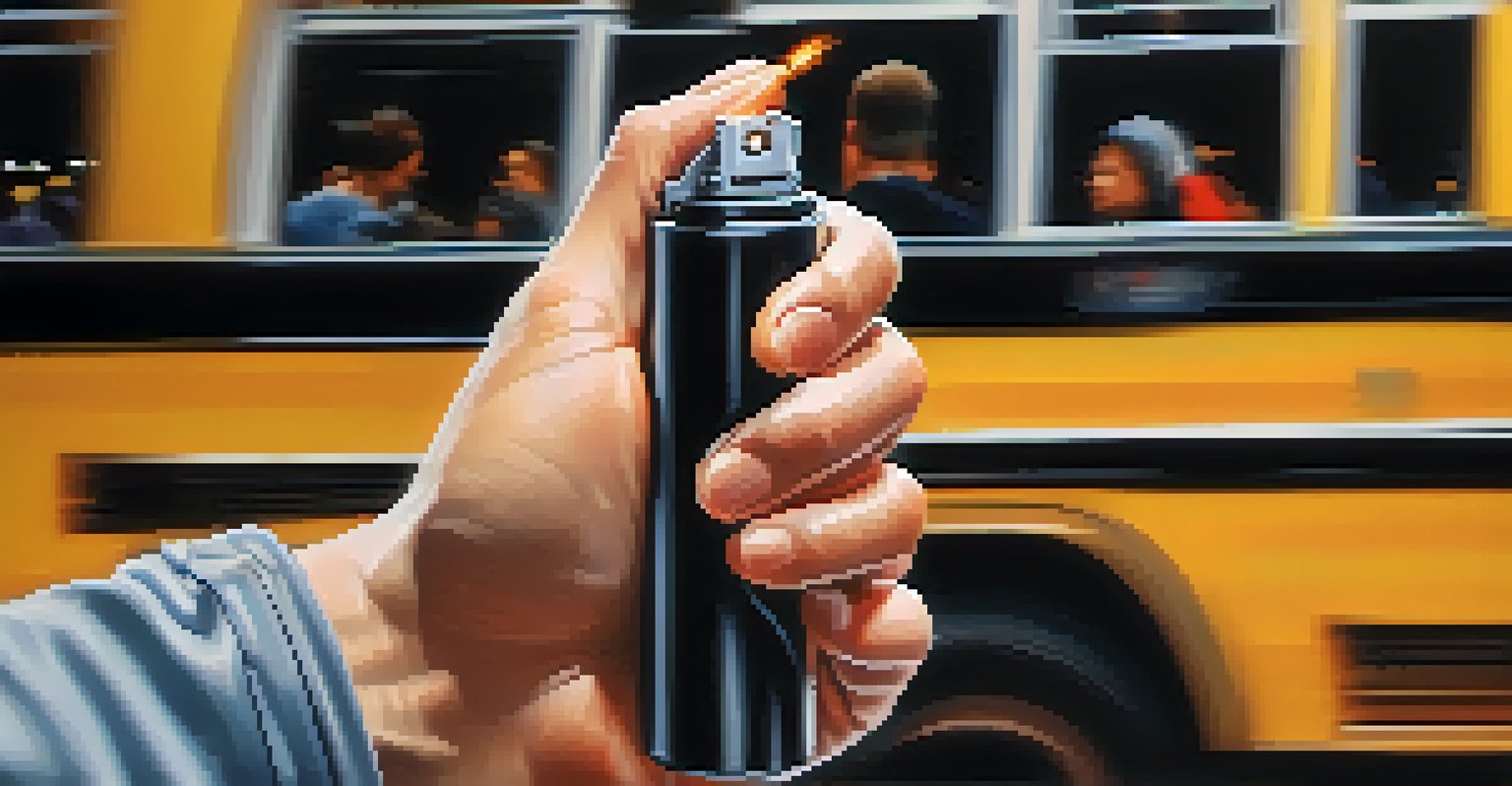Essential Self Defense Techniques for Public Transportation Users

Understanding Your Environment on Public Transport
When using public transportation, your surroundings can change rapidly. It’s crucial to stay aware of who is around you and how they are behaving. Look for exits and note the layout of the vehicle, whether it’s a bus, train, or subway, so you can react quickly if needed.
The best way to predict the future is to create it.
Always keep your belongings secure and within sight. A distracted commuter is an easy target for theft or harassment. Consider keeping your phone tucked away and your headphones off, allowing you to remain vigilant without being overly paranoid.
Trust your instincts. If something feels off, don’t hesitate to move to a different area of the vehicle or get off at the next stop. Your intuition is a powerful tool, and it’s important to listen to it when navigating potentially unsafe situations.
Basic Body Language for Self Defense
Your body language can send powerful signals to others, both positive and negative. Standing tall with your shoulders back conveys confidence and can deter potential aggressors. Conversely, appearing closed off or distracted might invite unwanted attention.

Make eye contact with those around you. This shows that you are alert and aware of your surroundings. If someone makes you uncomfortable, look away but remain attentive—this balance can help you stay safe without escalating tension.
Stay Aware on Public Transport
Being aware of your surroundings and trusting your instincts can significantly enhance your safety while using public transportation.
Practice assertive movements. Even simple gestures, like how you hold your bag or how you navigate through a crowd, can communicate that you are not an easy target. Remember, the goal is to project confidence without seeming confrontational.
Quick Defensive Moves to Learn
There are a few simple self-defense techniques anyone can learn, regardless of fitness level. For instance, a palm strike to the nose can be effective in surprising an assailant and giving you a moment to escape. Practicing this move can empower you and build your confidence.
Your safety is in your own hands; be aware, be prepared, and be confident.
Another useful technique is the ‘elbow strike.’ If someone is too close for comfort, using your elbow to hit their solar plexus or face can create distance. This move is especially handy in crowded spaces where mobility is limited.
Consider enrolling in a self-defense class that focuses on real-world scenarios. These classes often provide practical skills in a safe environment, helping you feel more prepared in case of an emergency. Plus, you’ll meet others who share your interest in personal safety!
Using Your Voice as a Tool
Never underestimate the power of your voice when it comes to self-defense. Yelling for help or shouting assertively can attract attention and deter an aggressor. A loud, clear voice can be more effective than you might think in a crisis situation.
Practice saying phrases like 'Back off!' or 'Leave me alone!' in a strong, confident tone. This not only helps you feel more comfortable using your voice, but it also serves as a mental rehearsal for when you may need to use it for real.
Use Body Language for Confidence
Projecting confidence through body language can deter potential aggressors and help you navigate social spaces more safely.
Additionally, don’t hesitate to ask others for help if you feel threatened. Most people are willing to step in if they see someone in distress. Building a sense of community on public transport can enhance safety for everyone.
Situational Awareness and Escape Routes
Situational awareness is key in any self-defense strategy. Always be aware of your surroundings, including who is near you and the dynamics of the environment. This proactive approach can help you identify potential threats before they escalate.
Plan your escape routes in advance. Knowing where the exits are located on a bus or train can make a huge difference in a tense situation. If you can quickly exit the vehicle or move to a more populated area, you increase your chances of staying safe.
Remember, maintaining situational awareness is not about being paranoid, but rather about empowering yourself. The more informed you are about your environment, the more prepared you’ll be to handle unexpected situations.
Self-Defense Tools and Their Responsible Use
Consider carrying self-defense tools like pepper spray, personal alarms, or keychain weapons. These items can provide an extra layer of security when used responsibly. However, it’s crucial to understand the laws regarding these items in your area.
Before using any self-defense tool, familiarize yourself with how it works and practice using it. The last thing you want is to fumble in a moment of panic. Having confidence in your chosen tool can make a significant difference in a crisis.
Practice Self-Defense Techniques
Learning simple self-defense moves and using your voice effectively can empower you to respond to threats and enhance your personal safety.
Always prioritize de-escalation and avoidance over confrontation. Tools should be a last resort, and using them responsibly is essential. By preparing yourself and knowing when to use these tools, you can enhance your safety without escalating violence.
Staying Calm Under Pressure
In any threatening situation, staying calm is paramount. Panic can cloud your judgment, making it harder to think clearly or react appropriately. Practice deep breathing techniques to help manage anxiety and maintain focus when needed.
Visualizing potential scenarios can also prepare you mentally. Picture yourself handling a confrontation calmly, and rehearse your responses. This mental preparation can make a real difference when you find yourself in a stressful situation.

Remember, self-defense is not just about physical techniques; it’s about mindset. Cultivating a calm and assertive attitude can empower you to respond effectively, helping you navigate public transportation with greater confidence.